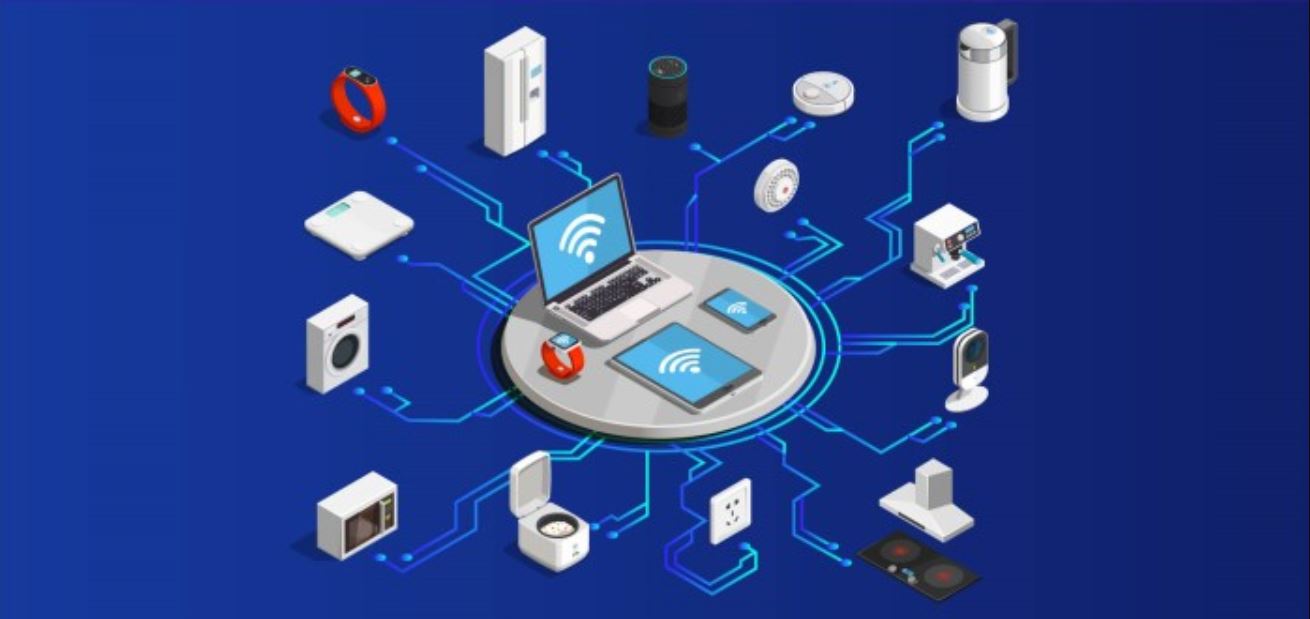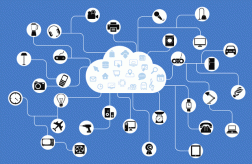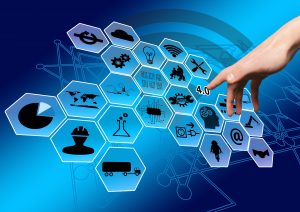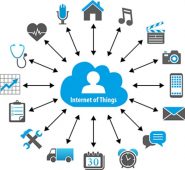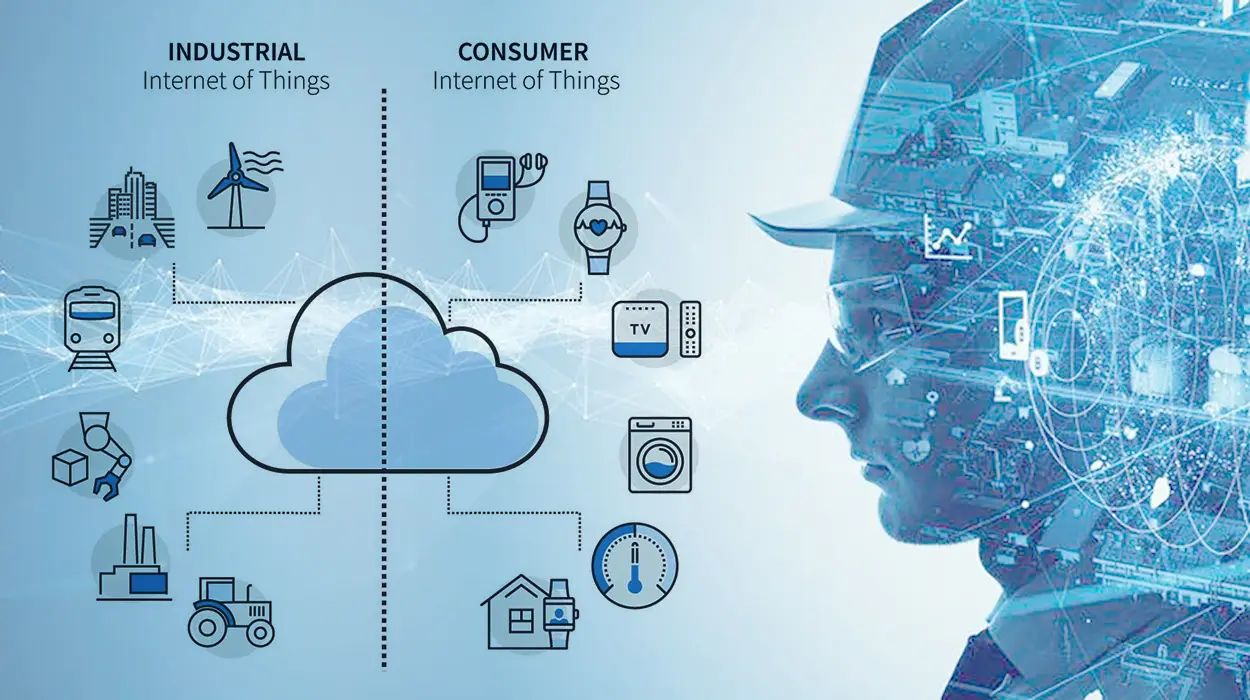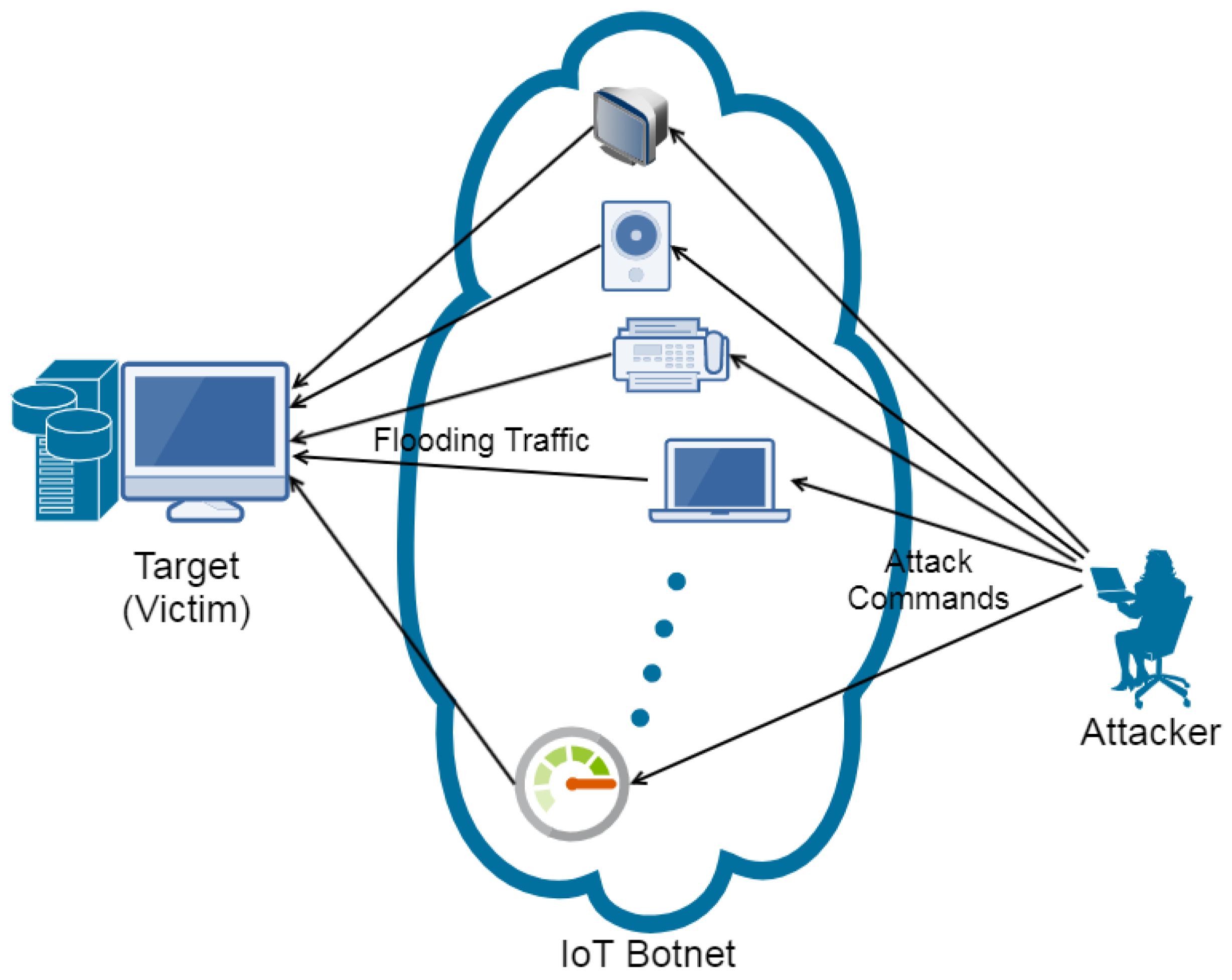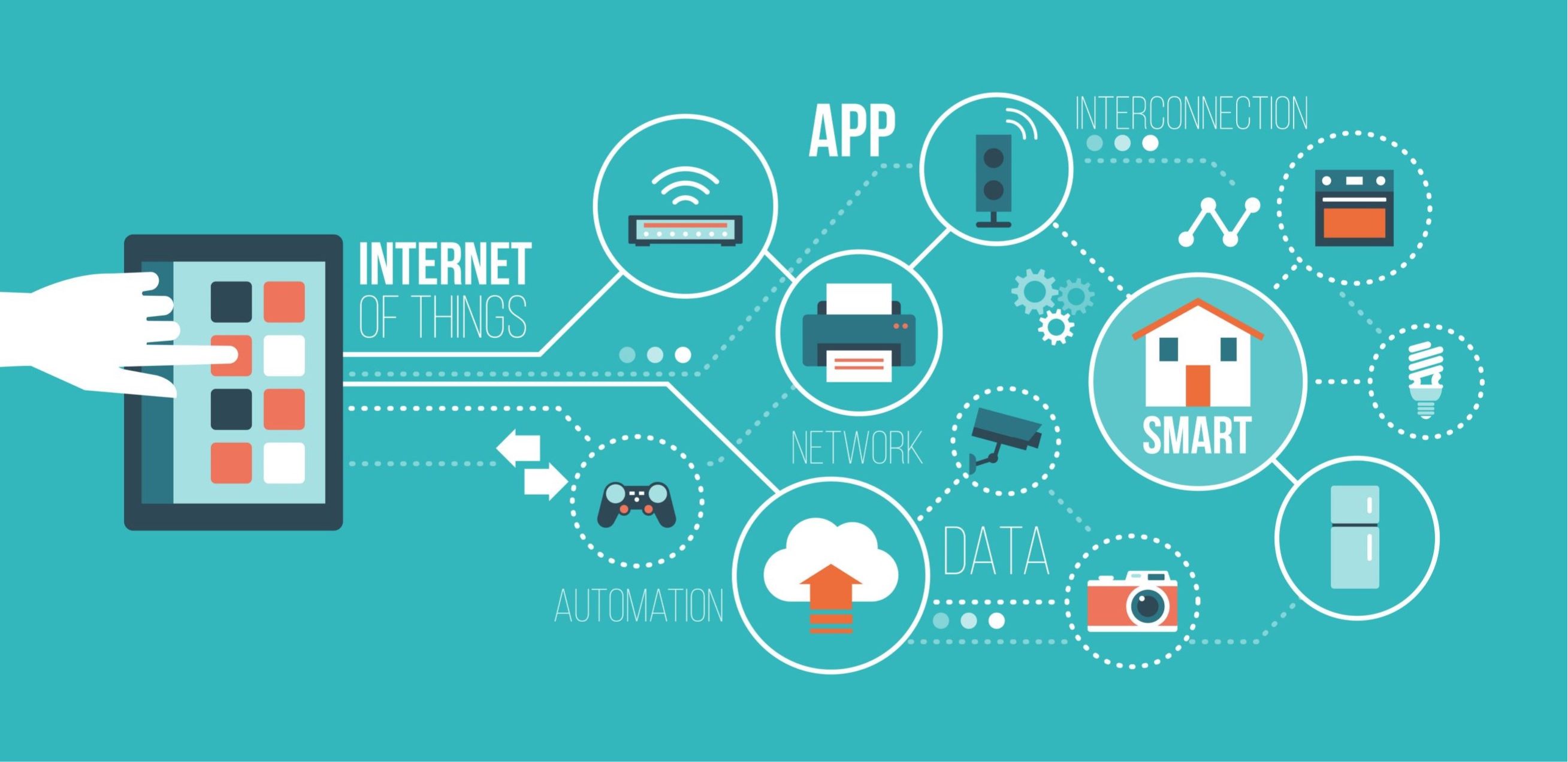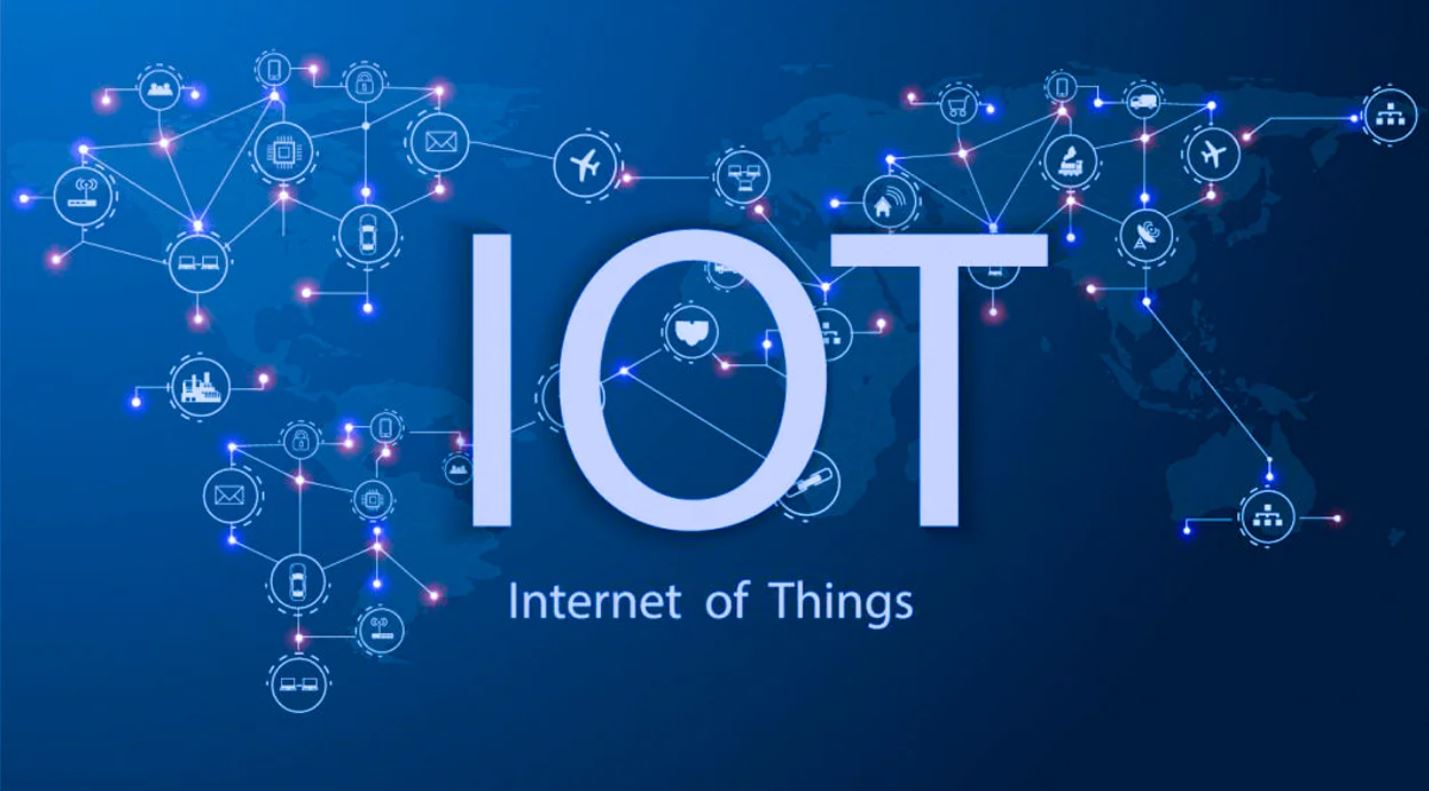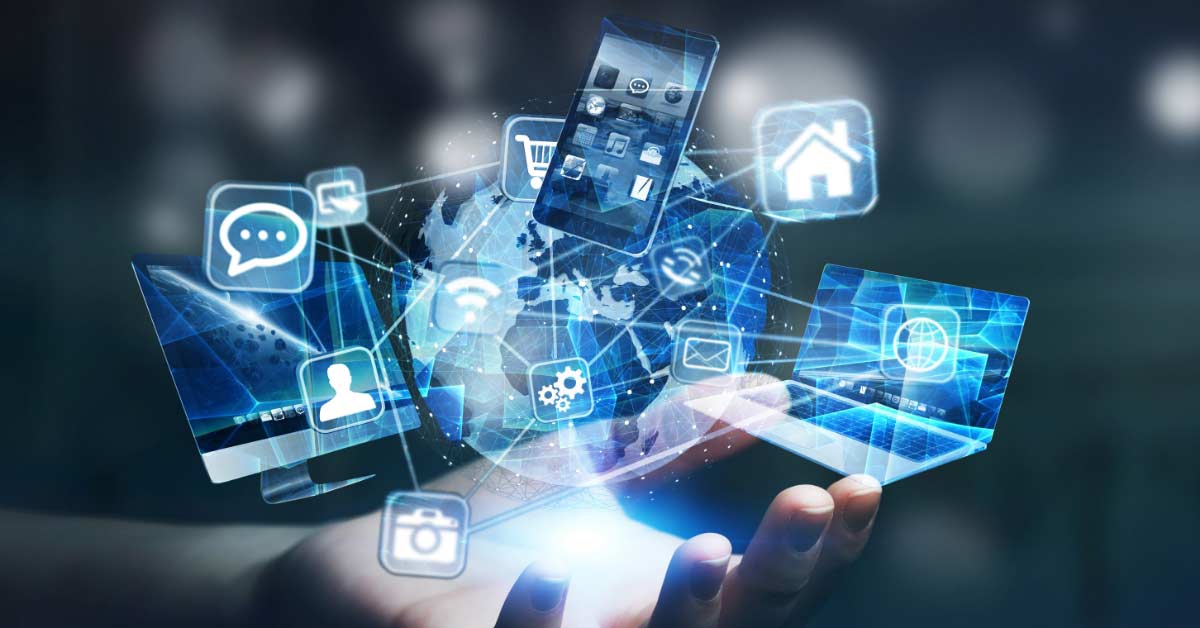What is IoT?
The Internet of Things (IoT) is a concept that refers to the interconnection of everyday objects and devices via the internet. These objects, commonly referred to as “smart” devices, are embedded with sensors, software, and connectivity capabilities, allowing them to collect and exchange data. The IoT has revolutionized the way we interact with our environment, enabling seamless communication and automation between devices and systems. From smart home devices to industrial applications, the IoT has become an integral part of our daily lives.
At its core, IoT aims to enhance efficiency, convenience, and productivity. By connecting various objects and devices, IoT enables the exchange of real-time information, leading to improved decision-making processes and increased operational effectiveness. Imagine a scenario where your alarm clock wakes you up, while simultaneously communicating with your coffee machine to start brewing your morning cup of coffee. This simple example illustrates how IoT enhances our daily routines and creates a more interconnected and automated environment.
Furthermore, IoT has gained prominence in sectors such as healthcare, agriculture, transportation, and more. In healthcare, IoT devices can monitor patients’ vitals remotely, enabling healthcare providers to offer timely interventions and better patient care. In agriculture, IoT can aid in precision farming by tracking soil conditions and adjusting irrigation and fertilization accordingly, leading to more efficient and sustainable farming practices.
The potential applications of IoT are virtually limitless. From smart cities, where connected devices monitor traffic patterns and optimize energy usage, to the retail industry, where IoT helps streamline supply chain management and enhance customer experiences, the benefits are immense. The ability to access and analyze real-time data from IoT devices allows businesses and individuals to make informed decisions, improve operational efficiencies, and create new opportunities.
As IoT continues to evolve, it is essential to address concerns surrounding privacy, security, and data management. With the increasing number of connected devices, ensuring the protection of sensitive information becomes paramount. However, as technology advances, so do the mechanisms to address these challenges, with the development of robust security frameworks and data encryption techniques.
In summary, IoT represents a paradigm shift in how we interact with the world around us. By connecting everyday objects to the internet, IoT has the potential to transform numerous industries, improve efficiency, and enhance our overall quality of life. As the technology continues to mature, it will be fascinating to see the innovative applications and advancements that will arise from the Internet of Things.
Smart Home Devices
Smart home devices are an integral part of the Internet of Things ecosystem. These devices are designed to make our lives more convenient, efficient, and secure by leveraging the power of connectivity and automation. From intelligent lighting systems to voice-controlled virtual assistants, smart home devices have transformed the way we interact with our homes.
One of the most popular smart home devices is the smart thermostat, which allows users to remotely control and adjust their home’s temperature. These devices use sensors to detect occupancy and can learn the user’s preferences over time, automatically adjusting the temperature to provide optimal comfort and energy efficiency. Smart thermostats can also be controlled through smartphone apps, enabling users to manage their home’s climate even when they are away.
Another common smart home device is smart lighting. These devices allow users to control the brightness, color, and scheduling of their lights using smartphone apps or voice commands. For example, homeowners can program their lights to gradually dim in the evening to promote better sleep or turn on automatically when they arrive home.
Home security is another area greatly enhanced by smart home devices. Smart security cameras and doorbell cameras allow users to remotely monitor their homes and receive real-time notifications of any suspicious activity. These devices can also integrate with other smart home devices, such as motion sensors and smart locks, to provide a comprehensive security system.
Smart speakers, such as the popular Amazon Echo or Google Nest, are also becoming increasingly prevalent in smart homes. These devices utilize advanced voice recognition technology to perform various tasks, such as playing music, answering questions, controlling other smart devices, and even ordering products online. With the integration of artificial intelligence and machine learning, these devices can understand and adapt to the user’s preferences and behaviors.
In addition to these examples, there is a wide range of other smart home devices available in the market, including smart appliances, smart door locks, smart blinds, and smart entertainment systems. The interconnectedness of these devices allows for seamless automation and control, creating a truly intelligent and personalized living environment.
Smart home devices offer numerous benefits, including increased energy efficiency, enhanced convenience, improved home security, and cost savings. With the ability to remotely control and monitor various aspects of the home, users can save energy by regulating heating and cooling systems, reduce electricity consumption by turning off lights and appliances when not in use, and even save on utility bills.
In summary, smart home devices have transformed the way we interact with our living spaces. With their ability to automate routine tasks, provide personalized experiences, and enhance security, these devices have become an essential part of modern homes. As technology continues to advance, we can expect even more innovative and interconnected smart home devices to enter the market, further enhancing the way we live and interact with our homes.
Wearable Technology
Wearable technology has emerged as a significant trend within the Internet of Things (IoT) landscape. These devices, worn on the body or incorporated into clothing and accessories, have the capability to collect data, monitor activity, and provide real-time feedback. From fitness trackers to smartwatches, wearable technology has revolutionized the way we monitor and manage our health and lifestyle.
One of the most common applications of wearable technology is in the realm of fitness and wellness. Fitness trackers, such as Fitbit or Garmin, are designed to monitor various physiological metrics, including heart rate, steps taken, calories burned, and sleep patterns. These devices provide individuals with valuable insights into their physical activity levels, allowing them to set goals, track progress, and make informed decisions about their exercise and overall wellbeing.
Smartwatches have also gained prominence as versatile wearable devices. Apart from displaying time, these devices offer a wide range of features, including notifications, music playback, GPS tracking, and even contactless payment capabilities. With the ability to install apps, smartwatches have become a convenient extension of our smartphones, allowing us to stay connected and organized, even when we’re on the move.
Wearable technology is not limited to the fitness and wellness space. It has also made significant strides in healthcare. Wearable medical devices, such as glucose monitors for diabetes management or ECG monitors for heart health, allow individuals to effortlessly track their health conditions and provide healthcare professionals with valuable data for diagnosis and treatment. These devices have the potential to improve patient outcomes and reduce healthcare costs by enabling remote monitoring and early intervention.
In addition to health-related applications, wearable technology is finding its way into various industries. In the workplace, smart glasses and augmented reality headsets enable hands-free access to information, providing workers with real-time instructions, enhancing workflow efficiency, and improving safety. In sports, wearable technology is utilized to capture and analyze performance data, aiding athletes in refining their techniques and optimizing their training.
Privacy and data security are crucial considerations in the widespread adoption of wearable technology. As these devices collect sensitive data about an individual’s body and activities, it is essential to ensure proper encryption and protection. Manufacturers and service providers have implemented various measures to address these concerns, including secure data storage, user consent mechanisms, and transparent privacy policies.
In summary, wearable technology has transformed the way we track our physical activities, monitor our health, and interact with the world around us. From fitness trackers to smartwatches and medical devices, wearables offer a plethora of applications and benefits. As technology continues to advance, we can expect further innovation in wearable technology, leading to more personalized and integrated experiences that will positively impact our lives and well-being.
Automotive Industry
The automotive industry has experienced a significant transformation with the integration of Internet of Things (IoT) technology. From connected cars to autonomous vehicles, IoT has revolutionized the way we interact with automobiles, enhancing safety, efficiency, and overall driving experience.
Connected cars utilize IoT technology to connect with the internet and other devices, creating a network of interconnected vehicles. This connectivity enables a wide range of features, such as real-time traffic updates, navigation assistance, remote vehicle monitoring, and even over-the-air software updates. With the integration of sensors and data analytics, connected cars can also provide drivers with predictive maintenance alerts, optimizing vehicle performance and reducing breakdowns.
Furthermore, IoT technology has paved the way for the development of autonomous vehicles. These vehicles use a combination of sensors, cameras, and AI algorithms to navigate and make decisions without human intervention. With IoT connectivity, autonomous vehicles can communicate with other vehicles, traffic lights, and infrastructure, enhancing safety and optimizing traffic flow. The potential benefits of autonomous vehicles include reduced accidents, improved fuel efficiency, and increased accessibility for individuals with mobility challenges.
In addition to safety and efficiency improvements, IoT has also enhanced the overall driving experience. Connected cars can integrate with smartphones and wearable devices, allowing users to access vehicle information, control features remotely, and receive personalized recommendations for entertainment and services. IoT technology also enables seamless integration with smart home devices and digital assistants, allowing users to control their home environment and interact with their vehicle through voice commands.
The automotive industry is not only benefiting from IoT technology in the production of vehicles but also in manufacturing processes. IoT-enabled sensors and automation systems improve efficiency, reduce downtime, and optimize supply chain management in automotive manufacturing plants. The real-time data collected from machines and processes allows for predictive maintenance, quality control, and process optimization, leading to cost savings and improved productivity.
As with any technology, there are challenges to overcome in the adoption of IoT technology in the automotive industry. Privacy and security are primary concerns, as connected vehicles generate and transmit a vast amount of data. Ensuring data protection, secure communication, and robust cybersecurity measures are crucial to maintain consumer trust and prevent unauthorized access or tampering.
In summary, IoT technology has revolutionized the automotive industry, transforming the way we drive and manufacture vehicles. Connected cars and autonomous vehicles have the potential to improve safety, efficiency, and overall driving experience significantly. As technology continues to advance, we can expect further developments in the automotive IoT landscape, leading to more intelligent, connected, and sustainable transportation solutions.
Industrial Internet of Things (IIoT)
The Industrial Internet of Things (IIoT) refers to the network of interconnected devices, sensors, and machines within the industrial sector. This integration of IoT technology in industrial processes has revolutionized the way businesses operate, leading to improved efficiency, productivity, and cost savings.
One of the main advantages of IIoT is the ability to collect and analyze real-time data from various industrial assets. Sensors embedded in machinery can monitor factors such as temperature, pressure, vibration, and energy consumption, providing valuable insights into the performance and health of equipment. This data is then analyzed using advanced analytics techniques to detect anomalies, predict maintenance needs, and optimize operational efficiency.
IIoT also enables remote monitoring and control of industrial processes. Through IoT connectivity, operators and managers can access real-time data and control systems from anywhere, allowing for timely decision-making and proactive intervention. This remote monitoring capability improves operational efficiency, reduces downtime, and enhances overall productivity.
Furthermore, IIoT facilitates the concept of “smart factories” or “Industry 4.0.” By connecting and integrating various components of the production process, including machines, inventory management systems, and supply chain networks, businesses can achieve a higher level of automation and optimization. This leads to reduced waste, increased flexibility, and the ability to respond quickly to changing market demands.
The implementation of IIoT also enables predictive maintenance, a proactive approach to equipment upkeep. By continuously monitoring equipment performance, IIoT systems can detect early warning signs of potential failures and notify maintenance teams in advance. This not only minimizes unplanned downtime but also extends the lifespan of assets and reduces maintenance costs.
However, the adoption of IIoT in industrial settings comes with challenges. Interoperability between different devices and systems can be a hurdle, as legacy machinery may not be IoT compatible. Additionally, ensuring the security and reliability of data transmission and storage is crucial to prevent cyber-attacks and unauthorized access to sensitive information.
In summary, IIoT has transformed the industrial landscape, enabling businesses to optimize operations, improve productivity, and reduce costs. By leveraging real-time data, remote monitoring, and predictive maintenance, IIoT has paved the way for smarter, more efficient factories and supply chains. As the technology continues to advance and security concerns are addressed, the potential for growth and innovation in the Industrial Internet of Things is vast and promising.
Healthcare Applications
The integration of Internet of Things (IoT) technology in healthcare has opened up a world of possibilities, revolutionizing patient care, improving treatment outcomes, and transforming the healthcare industry as a whole. From remote patient monitoring to smart medical devices, IoT has provided numerous applications and benefits in healthcare settings.
One of the key uses of IoT in healthcare is remote patient monitoring. IoT devices, such as wearables and sensors, can continuously collect and transmit vital health data to healthcare providers, allowing for real-time monitoring and early intervention. For example, patients with chronic conditions can use IoT-enabled devices to track their blood pressure, glucose levels, and heart rate, allowing healthcare professionals to remotely monitor their health and provide timely advice or adjust treatment plans accordingly.
IoT has also improved medication management and adherence. Smart pill bottles or dispensers can track when medications are taken and send reminders to patients if doses are missed. This helps to ensure that patients follow their prescribed medication regimen, reducing the risk of missed doses and improving treatment efficacy.
In healthcare facilities, IoT technology enables asset tracking and inventory management. By placing IoT sensors on equipment and supplies, hospitals can monitor their location, usage, and availability in real-time. This helps to streamline workflows, reduce costs, and ensure sufficient inventory levels. IoT-enabled asset tracking also improves patient safety by ensuring that critical devices, such as defibrillators or infusion pumps, are readily available when needed.
IoT has also revolutionized patient engagement and healthcare delivery. Patients can access their healthcare records through online portals or mobile apps, allowing them to view test results, schedule appointments, and communicate with healthcare providers. Additionally, IoT devices can facilitate telemedicine services, enabling remote consultations and reducing the need for in-person visits, especially for patients in rural or underserved areas.
Furthermore, IoT technology has made significant advancements in the field of telehealth and telemonitoring. Patients with chronic conditions or those recovering from surgeries or procedures can be monitored remotely through IoT devices. Doctors and nurses can receive real-time data on patients’ vital signs, allowing for early detection of complications and prompt intervention. This not only improves patient outcomes but also reduces hospital readmissions and healthcare costs.
However, the widespread adoption of IoT in healthcare comes with challenges. Privacy and security of patient data are critical considerations, as the transmission and storage of sensitive health information need to be safeguarded. Additionally, interoperability and standardization of IoT devices and systems are essential to ensure seamless integration and efficient data exchange across different healthcare settings.
In summary, the applications of IoT in healthcare are vast and promising. From remote patient monitoring to telehealth services, IoT has the potential to enhance patient care, improve treatment outcomes, and transform healthcare delivery. As technology continues to advance and challenges are addressed, we can expect continued innovation and the integration of IoT in various aspects of healthcare, leading to more efficient, accessible, and patient-centric care.
Smart Cities
Smart cities are an exciting and rapidly growing application of Internet of Things (IoT) technology. By leveraging IoT capabilities, cities can enhance efficiency, sustainability, and the overall quality of life for residents. From optimizing energy usage to improving traffic management, smart cities utilize real-time data and connectivity to create a more interconnected and intelligent urban environment.
One of the primary objectives of smart cities is to optimize energy management and reduce environmental impact. IoT technology enables the monitoring and control of energy consumption in buildings, streetlights, and infrastructure. For example, smart meters can provide real-time energy usage data to both residents and utility companies, allowing for more efficient energy usage and cost savings. Additionally, IoT sensors can detect occupancy levels in buildings, adjusting heating, cooling, and lighting systems accordingly, reducing energy waste.
Smart transportation is another significant aspect of smart cities. IoT-enabled traffic management systems can collect data on traffic flow, congestion, and vehicle movement, allowing for optimized traffic signal timing and more efficient routing. This not only reduces traffic congestion but also improves air quality and decreases travel time for residents. Additionally, IoT technology enables the implementation of intelligent parking systems, helping drivers locate available parking spaces and reducing the time spent searching for parking.
Citizen safety and security are also paramount in smart cities. IoT devices, such as surveillance cameras and sensors, can monitor public spaces and detect unusual activities. This real-time data can help law enforcement agencies respond quickly to incidents, prevent crime, and ensure public safety. Furthermore, smart cities can leverage IoT technology for emergency management, enabling early detection and response to natural disasters or public health emergencies.
Smart infrastructure is another key component of smart cities. IoT sensors can monitor the structural health of bridges, roadways, and other critical infrastructure, detecting signs of deterioration and triggering maintenance or repairs. This proactive approach to infrastructure management ensures the safety of residents and reduces the cost and disruption associated with emergency repairs.
Quality of life improvements are also central to smart cities. IoT-enabled smart lighting and waste management systems can enhance the livability of urban spaces. Smart streetlights can adjust brightness levels based on pedestrian and vehicle presence, improving energy efficiency and reducing light pollution. IoT sensors in waste bins can monitor fill levels and optimize waste collection routes, leading to more efficient waste management and cleaner cities.
However, the implementation of smart cities also brings challenges. Privacy and data security are essential considerations to address as smart city devices collect vast amounts of data. It is crucial to ensure that proper encryption and data protection measures are in place to safeguard individuals’ private information. Additionally, interoperability and standardization of IoT devices and systems are crucial to enable seamless integration and data exchange between different components of a smart city.
In summary, smart cities leverage IoT technology to create more sustainable, efficient, and livable urban environments. From energy management to transportation and public safety, IoT enables cities to make data-driven decisions and improve services for residents. As technology continues to advance and challenges are addressed, smart cities have the potential to improve the overall quality of life and create more sustainable and vibrant communities.
Agriculture and Farming
The integration of Internet of Things (IoT) technology in agriculture has revolutionized traditional farming practices, leading to increased productivity, efficiency, and sustainability. IoT applications in agriculture, also known as smart farming, leverage real-time data, connectivity, and automation to optimize crop yield, conserve resources, and improve overall farm operations.
One of the significant benefits of IoT in agriculture is precision farming. IoT-enabled sensors and devices can monitor various environmental factors, such as temperature, humidity, soil moisture, and nutrient levels. This real-time data allows farmers to make informed decisions about irrigation, fertilization, and pest control, ensuring that crops receive the optimal conditions for growth. Precision farming reduces resource waste, increases productivity, and minimizes the use of fertilizers and pesticides, leading to more sustainable farming practices.
IoT technology also enables livestock monitoring and management. Sensors and wearable devices can collect data on animal health, behavior, and location. This information aids farmers in detecting signs of illness or distress, ensuring timely medical intervention, and improving animal welfare. Additionally, IoT devices can track the location of livestock, preventing theft and aiding in farm management.
Smart irrigation systems are another essential application of IoT in agriculture. By using soil moisture sensors, weather data, and crop water requirements, IoT-enabled irrigation systems can automatically deliver the right amount of water to crops. This reduces water waste and saves costs while ensuring that plants receive optimal hydration for healthy growth.
IoT technology also plays a significant role in farm equipment management and maintenance. By equipping tractors, harvesters, and other machinery with IoT sensors, farmers can monitor equipment performance, detect potential faults or breakdowns, and perform predictive maintenance. This reduces downtime, increases operational efficiency, and extends the lifespan of farm machinery.
In addition to improving farm operations, IoT enables supply chain management and traceability in agriculture. By tracking and monitoring crops from the field to the market, IoT systems provide transparency and accountability, ensuring food safety and quality. This is particularly crucial in a world where consumers are increasingly concerned about the origins and production practices of the food they consume.
However, embracing IoT in agriculture also comes with challenges. Connectivity and internet access in rural farming areas may be limited, hindering widespread implementation of IoT technologies. Interoperability between different IoT devices and systems is also crucial to ensure seamless integration and data exchange between different components of smart farming solutions. Moreover, data security and privacy protection are essential considerations in managing the vast amount of data collected by IoT devices.
In summary, IoT technology has transformed agriculture and farming, enabling farmers to make data-driven decisions, improve efficiency, and adopt sustainable practices. From precision farming and smart irrigation to livestock monitoring and supply chain management, IoT applications in agriculture have the potential to enhance productivity, reduce resource waste, and ensure food security. As technology continues to evolve, we can expect further innovations in IoT for agriculture, leading to a more productive, sustainable, and resilient farming industry.
Energy Management
The integration of Internet of Things (IoT) technology in energy management has revolutionized the way energy is consumed, monitored, and managed. IoT-enabled systems and devices provide real-time data, connectivity, and automation, enabling more efficient and sustainable energy usage in various settings, from residential homes to commercial buildings and industrial facilities.
One of the key applications of IoT in energy management is smart grid technology. Smart grids utilize IoT sensors, meters, and advanced analytics to monitor, control, and optimize electricity distribution. By collecting real-time data on energy consumption, grid operators can identify areas of high demand, grid imbalances, and potential outages. This enables the timely allocation of resources, load balancing, and proactive management of the electricity grid, ensuring reliable power supply and reducing energy waste.
IoT technology also enables smart metering, allowing for more accurate and frequent measurement of energy usage. Smart meters provide real-time energy consumption data to both utility companies and consumers, enabling more precise billing and facilitating demand-response programs. Consumers can track their energy usage patterns and make informed decisions about how to reduce their consumption and save on energy costs.
In commercial buildings and residential homes, IoT devices play a significant role in energy management. Connected thermostats, lighting systems, and appliances can be controlled and automated based on occupancy, time of day, or energy pricing. This enables the optimization of energy usage, reduces wastage, and enhances energy efficiency. Smart energy management systems can also integrate renewable energy sources, such as solar panels or wind turbines, into the grid, further promoting sustainability and reducing reliance on fossil fuels.
Industrial facilities can also benefit from IoT-enabled energy management. Sensors and meters can monitor energy consumption in real-time, identifying areas of inefficiency and providing insights for optimization. Industrial automation systems can make adjustments to equipment and processes based on energy demand and pricing, ensuring cost-effective operations while minimizing energy waste.
IoT technology is also being utilized in electric vehicle (EV) charging infrastructure. Through IoT connectivity, EV charging stations can communicate with the grid to optimize charging based on electricity demand and availability. This helps to balance the load on the grid, prevent peak demand surges, and accommodate the increasing number of EVs on the road.
However, the implementation of IoT in energy management also presents challenges. Data security and privacy protection are critical considerations, as the collection and transmission of real-time energy consumption data can be vulnerable to cyber-attacks. Ensuring secure data transmission and storage is essential to maintain consumer trust and protect user privacy. Additionally, as with any IoT implementation, interoperability and standardization of devices and systems are crucial to enable seamless integration and efficient data exchange.
In summary, IoT has revolutionized energy management by providing real-time data, connectivity, and automation. By optimizing energy distribution, enabling smart metering, and facilitating energy-efficient systems, IoT contributes to more sustainable and cost-effective energy usage. As technology continues to advance and challenges are addressed, the integration of IoT in energy management holds great potential in creating more efficient and resilient energy systems.
Retail and Supply Chain Management
The integration of Internet of Things (IoT) technology in the retail industry has transformed supply chain management, revolutionizing the way products are tracked, managed, and delivered. IoT enables real-time data collection, connectivity, and automation, enhancing operational efficiency, inventory management, and customer satisfaction in retail and supply chain operations.
One of the key applications of IoT in retail is inventory management. IoT devices, such as RFID tags or sensors, can be attached to products, enabling real-time tracking throughout the supply chain. This helps retailers monitor inventory levels, track product movement, and facilitate timely restocking. IoT-enabled systems can automatically update inventory records, reducing the risk of stockouts or overstocking and optimizing supply chain efficiency.
IoT technology also enables real-time demand forecasting. By collecting and analyzing data on customer behavior, sales patterns, and market trends, retailers can accurately predict product demand and adjust their inventory levels accordingly. This leads to better inventory planning, reduced waste, and increased customer satisfaction.
In addition to inventory management, IoT enhances supply chain visibility and transparency. IoT sensors can monitor the condition and location of products during transportation, providing real-time updates on temperature, humidity, and other environmental factors. This ensures the quality and freshness of perishable goods, reduces spoilage, and prevents product damage. Furthermore, this visibility allows retailers to provide customers with accurate and up-to-date information on the status of their orders, leading to improved customer experience and increased trust.
IoT technology also enables predictive maintenance in supply chain operations. By monitoring equipment, vehicles, and machinery in real-time, IoT systems can detect signs of potential failures or maintenance needs. This allows for proactive maintenance interventions, reducing downtime, and optimizing the efficiency of supply chain operations.
Additionally, IoT-enabled systems improve the overall customer experience in retail. Connected devices, such as digital kiosks or smart shelves, can provide personalized product recommendations, offers, or promotions based on customer preferences and purchase history. This enhances customer engagement, increases sales, and fosters brand loyalty.
However, the widespread adoption of IoT in retail and supply chain management also comes with challenges. Data security and privacy protection are crucial considerations, as the collection and transmission of real-time data can be vulnerable to cyber threats. Ensuring secure data storage, encryption, and user consent mechanisms are essential to protect sensitive customer information. Additionally, the interoperability and standardization of IoT devices and systems are critical to enable seamless integration and data exchange between different stakeholders in the supply chain.
In summary, IoT technology has transformed retail and supply chain management by enhancing inventory management, supply chain visibility, and the overall customer experience. By enabling real-time data collection, connectivity, and automation, IoT improves operational efficiency, reduces costs, and increases customer satisfaction. As technology continues to evolve and challenges are addressed, the integration of IoT in retail and supply chain management will continue to drive innovation and efficiency in the industry.







